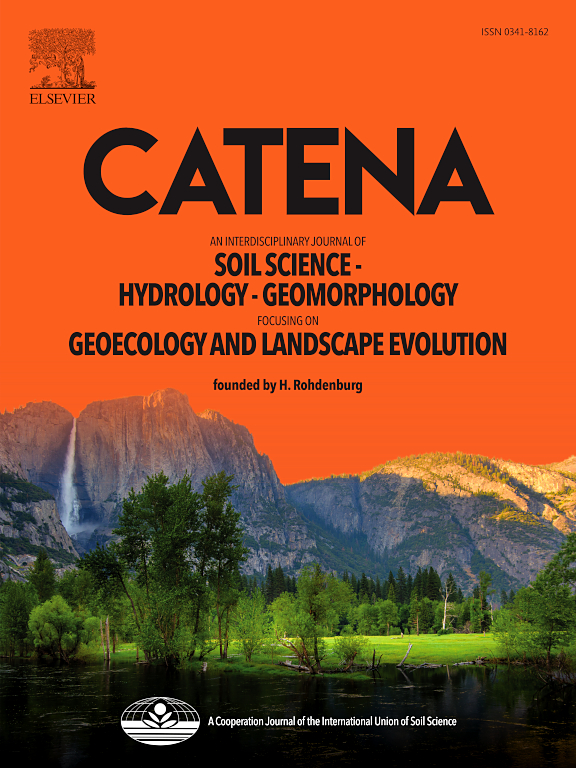Post-wildfire wind and water erosion could accelerate toxic metals and nutrients movements on subtropical karst hillslopes
IF 5.4
1区 农林科学
Q1 GEOSCIENCES, MULTIDISCIPLINARY
引用次数: 0
Abstract
Postfire nutrients and toxic heavy metals movements threaten the clean water supply and ecosystem maintenance in the karst region. However, the complexity of these processes and spatial heterogeneities of burning severity and karst landscape limit the study of these processes. In this study, we disentangled the complexities by dividing the processes into wind-dominated and water-dominated periods. Field sampling, artificial burning and overland flow detachment, and in-situ observations were conducted on both burn and unburned sites. The results exhibited that wildfire induced ash produced P, As, and Cd. Approximately 70 % of ash was lost driven by the wind in only 1.5 months after the wildfire. The loss was significant two years after the fires. The combustion-induced ash had twice more P than the unburned soil. However, it lost fast via ash wind erosion after the fire. The combustion promoted rock surface weathering, which increased soil nutrients and heavy metals after rainfall occurred. The effect was offsetted by water erosion in the wet season. In the water-dominated period, 4.26 mm of land surface soil was eroded by the raindrops and overland flow due to the reduced soil resistance to erosion and land surface cover. Water erosion could promote soil particle-absorbed nutrients and toxic metal migration on the land surface and through the subsurface fractures. This study calls for controls of the wind and water coupled processes on soil erosion, heavy metals, and nutrient movements for post-wildfire land management in the subtropical karst region.
求助全文
约1分钟内获得全文
求助全文
来源期刊

Catena
环境科学-地球科学综合
CiteScore
10.50
自引率
9.70%
发文量
816
审稿时长
54 days
期刊介绍:
Catena publishes papers describing original field and laboratory investigations and reviews on geoecology and landscape evolution with emphasis on interdisciplinary aspects of soil science, hydrology and geomorphology. It aims to disseminate new knowledge and foster better understanding of the physical environment, of evolutionary sequences that have resulted in past and current landscapes, and of the natural processes that are likely to determine the fate of our terrestrial environment.
Papers within any one of the above topics are welcome provided they are of sufficiently wide interest and relevance.
 求助内容:
求助内容: 应助结果提醒方式:
应助结果提醒方式:


